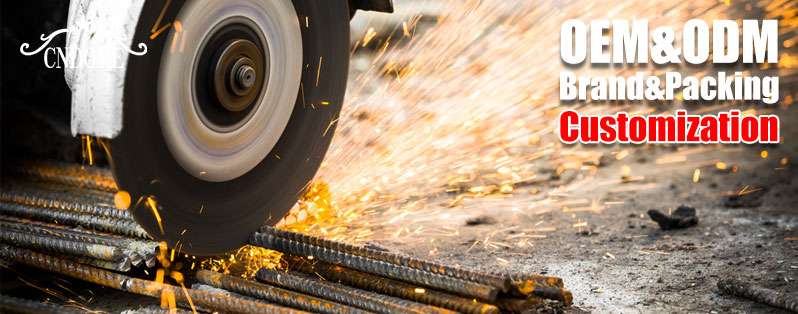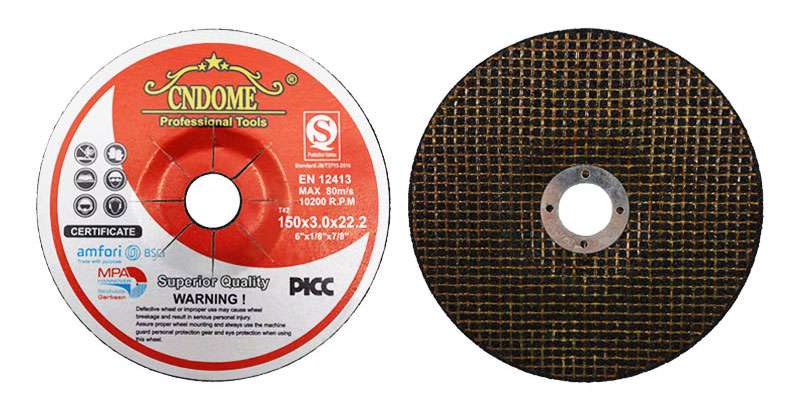Cutting discs are essential tools in various industries, from metalworking to construction. Their efficiency, durability, and performance directly impact the quality of work and the overall productivity of a project. One critical factor that professionals and DIY enthusiasts alike must consider is the service life of cutting discs. Understanding what influences the lifespan of a cutting disc can help users make informed decisions, ensuring they get the best value and performance from their tools.
What is the Service Life of a Cutting Disc?
The service life of a cutting disc refers to the duration it can effectively cut through materials before it becomes worn out or unsafe to use. This lifespan can vary significantly depending on several factors, including the type of disc, the materials being cut, the cutting technique, and the equipment used.
Factors Affecting the Service Life of Cutting Discs
1. Material of the Disc:
Cutting discs are made from various materials, such as aluminum oxide, silicon carbide, or zirconia alumina. The material composition plays a significant role in determining the disc’s durability. For instance, zirconia alumina discs are known for their longer lifespan compared to standard aluminum oxide discs due to their superior hardness and wear resistance.
2. Type of Material Being Cut:
The hardness and thickness of the material being cut also affect the disc’s service life. Cutting through harder materials like stainless steel or reinforced concrete can wear down a disc faster than softer materials like mild steel or wood. Additionally, thicker materials require more cutting force, which can accelerate the wear and tear on the disc.
3. Cutting Speed and Pressure:
The speed at which the disc rotates (measured in RPM) and the pressure applied during cutting can significantly impact the disc’s longevity. Excessive speed or pressure can cause the disc to overheat, leading to premature wear or even breakage. Conversely, using the appropriate speed and pressure ensures smoother cuts and extends the disc’s service life.
4. Disc Size and Thickness:
Larger and thicker discs generally have a longer service life due to their increased surface area and durability. However, they may also require more power to operate effectively. Choosing the right size and thickness for your specific application is crucial to optimizing both performance and longevity.
5. Cutting Technique:
Proper cutting techniques, such as maintaining a steady hand, keeping the disc perpendicular to the workpiece, and avoiding excessive lateral pressure, can significantly extend the disc’s service life. Improper handling, such as twisting or jamming the disc, can lead to uneven wear or even catastrophic failure.
6. Cooling and Lubrication:
Using coolants or lubricants during the cutting process can help reduce friction and heat buildup, which are common causes of disc wear. This is especially important when cutting metals, as overheating can lead to rapid disc degradation.
7. Storage and Handling:
How you store and handle cutting discs also affects their service life. Discs should be kept in a cool, dry place, away from direct sunlight and moisture. Proper storage prevents the disc from becoming brittle or warped, which can compromise its performance and safety.
Tips for Extending the Service Life of Cutting Discs
- Choose the Right Disc: Ensure you select a cutting disc that is specifically designed for the material and type of work you are doing. For instance, using a disc intended for steel on aluminum will result in faster wear and less effective cutting.
- Maintain Proper Cutting Technique: Avoid applying excessive force and maintain a consistent angle while cutting. Let the disc do the work, and avoid forcing it through the material.
- Use Appropriate RPM: Always operate the cutting disc within the manufacturer’s recommended speed range. Operating at the correct RPM reduces the risk of overheating and extends the disc’s service life.
- Regular Inspection: Before each use, inspect the disc for signs of wear, cracks, or damage. Replace the disc if any defects are found to prevent accidents and ensure optimal performance.
- Keep Discs Cool: When cutting for extended periods, allow the disc to cool down intermittently to prevent overheating. This can be done by taking breaks or using a coolant.
Conclusion
The service life of a cutting disc is influenced by various factors, including the material of the disc, the type of material being cut, cutting speed and pressure, and the user’s technique. By understanding these factors and following best practices, you can significantly extend the lifespan of your cutting discs, ensuring safer, more efficient, and cost-effective operations. Remember, investing in quality discs and using them correctly is key to maximizing their service life and getting the best results from your cutting projects.



